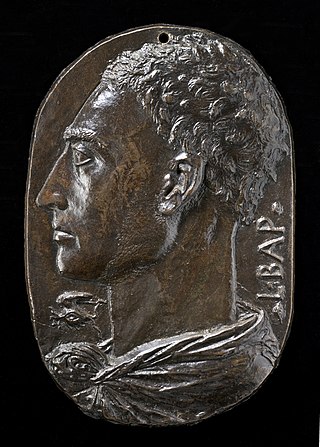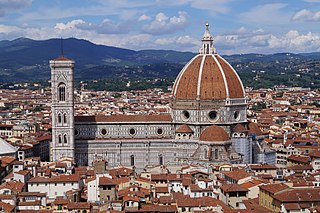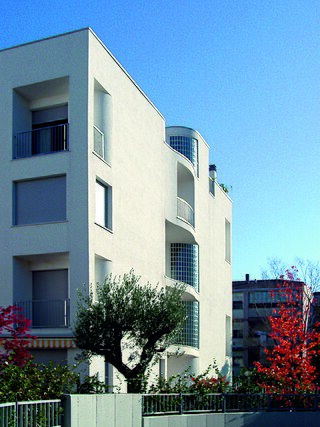History
Divisare is one of the first architecture websites in the history of the web. Online since 1998 as Europaconcorsi, it was rebranded in August 2015, launching three new different platforms: Divisare, Europaconcorsi and Architettura Italiana. At first, Europaconcorsi was a service to inform architects about design competitions in Europe (in Italian, "concorsi" means competitions), on recently issued tenders as well as the results of competitions, with rankings of the winners and the participating projects. From the outset Europaconcorsi was conceived as a structure of related but distinct databases: informations on competitions, projects and designers were gathered in autonomous data structures.
With almost 20 years of history behind it, and over 140,000 projects, Divisare is the largest online archive of contemporary architecture. Curated by the team based in Rome, Italy, Divisare is structured as a library of thematic albums (organized per elements, cities, houses, ideas, materiality, plans & details, private interiors, public interiors, topics and types) featuring the most relevant pieces of architecture ever designed. Complementary with the daily showcase on the online platform, registered subscribers received Journal, a weekly review curated by the editorial staff.
Divisare means imagining, designing with the mind, literally "to devise". The term was used by Leon Battista Alberti to define the work of the architect: "Him I call an Architect, who, by sure and wonderful Art and Method, is able, both with Thought and Invention, to devise." (Leon Battista Alberti — De Re Aedificatoria, 1450 - original Italian: "Architettore chiamerò io colui, il quale saprà con certa, e maravigliosa ragione, e regola, sì con la mente, e con lo animo divisare").
During November 2018, the website announced that the Atlas of Architecture would be soon closed. A month later, final closure was set to December 15, 2018. As of December 15, Divisare, Divisare Books and all personal pages became inactive.
As of July 1, 2019, Divisare has relaunched their website and online bookstore.
Divisare Books
In early 2017, Divisare launched Divisare Books, a high-quality, independent editorial project, a modular publication dedicated to architecture documents, a constantly growing archipelago of monographic issues each tackling a different topic: drawings collections, photographic surveys, visual essays, short writings and projects. The first series of Divisare Books was released in March 2017. It included 45 titles and 3 limited edition box sets (Dario Passi - Drawings, Italian Interiors and Rory Gardiner - Museums). In October 2017, Divisare Books published 76 new titles, 20 reprints and 15 new box sets. In December 2017, Divisare Books extended its production to Divisare Notebooks, limited-edition boxed sets of 12 sketchbooks (Red Series) or 4 sketchbooks (Blue Series). Divisare Books ceased to exist as of December 15, 2018. On July 1, 2019, Divisare Books has relaunched and is now selling a new selection of architecture books in limited numbers.

Leon Battista Alberti was an Italian Renaissance humanist author, artist, architect, poet, priest, linguist, philosopher, and cryptographer; he epitomised the nature of those identified now as polymaths. He is considered the founder of Western cryptography, a claim he shares with Johannes Trithemius.

Filippo di ser Brunellesco di Lippo Lapi, commonly known as Filippo Brunelleschi and also nicknamed Pippo by Leon Battista Alberti, was an Italian architect, designer, goldsmith and sculptor. He is considered to be a founding father of Renaissance architecture. He is recognized as the first modern engineer, planner, and sole construction supervisor. In 1421, Brunelleschi became the first person to receive a patent in the Western world. He is most famous for designing the dome of the Florence Cathedral, and for the mathematical technique of linear perspective in art which governed pictorial depictions of space until the late 19th century and influenced the rise of modern science. His accomplishments also include other architectural works, sculpture, mathematics, engineering, and ship design. Most surviving works can be found in Florence.

Filippo Juvarra was an Italian architect, scenographer, engraver and goldsmith. He was active in a late-Baroque architecture style, working primarily in Italy, Spain, and Portugal.

Sebastiano Serlio was an Italian Mannerist architect, who was part of the Italian team building the Palace of Fontainebleau. Serlio helped canonize the classical orders of architecture in his influential treatise variously known as I sette libri dell'architettura or Tutte l'opere d'architettura et prospetiva.

Giuliano da Sangallo was an Italian sculptor, architect and military engineer active during the Italian Renaissance. He is known primarily for being the favored architect of Lorenzo de' Medici, his patron. In this role, Giuliano designed a villa for Lorenzo as well as a monastery for Augustinians and a church where a miracle was said to have taken place. Additionally, Giuliano was commissioned to build multiple structures for Pope Julius II and Pope Leo X. Leon Battista Alberti and Filippo Brunelleschi heavily influenced Sangallo and in turn, he influenced other important Renaissance figures such as Raphael, Leonardo da Vinci, his brother Antonio da Sangallo the Elder, and his sons, Antonio da Sangallo the Younger and Francesco da Sangallo.
Venice Biennale of Architecture is an international exhibition of architecture from nations around the world, held in Venice, Italy, every other year. It was held on even years until 2018, but 2020 was postponed to 2021 due to the COVID-19 pandemic shifting the calendar to uneven years. It is the architecture section under the overall Venice Biennale and was officially established in 1980, even though architecture had been a part of the Venice Art Biennale since 1968.

Joseph Rykwert CBE is Paul Philippe Cret Professor Emeritus of Architecture at the University of Pennsylvania, and one of the foremost architectural historians and critics of his generation. He has spent most of his working life in the United Kingdom and America. He has taught the history and theory of architecture at several institutions in Europe and North America. Rykwert is the author of many influential works on architecture, including The Idea of a Town (1963), On Adam's House in Paradise (1972), The Dancing Column (1996) and The Seduction of Place (2000). All his books have been translated into several languages.

Iuav University of Venice is a university in Venice, Italy. It was founded in 1926 as the Istituto Universitario di Architettura di Venezia as one of the first Architecture schools in Italy. The university currently offers several undergraduate, graduate and higher education courses in Architecture, Urban Planning, Fashion, Arts, and Design.
Giorgio Grassi is one of Italy's most important modern architects, and part of the so-called Italian rationalist school, also known as La Tendenza, associated most famously with Carlo Aymonino and Aldo Rossi that emerged in Italy in the 1960s. Much influenced by Ludwig Hilberseimer, Heinrich Tessenow and Adolf Loos, Grassi's architecture is the most severely rational of the group: his extremely formal work is predicated on absolute simplicity, clarity, and honesty without ingratiation, rhetoric, or spectacular shape-making; it refers to historical archetypes of form and space and has a strong concern with the making of urban space. For these reasons Grassi is a non-conformist and a critic of conventional mainstream architecture.

Marcello Piacentini was an Italian urban theorist and one of the main proponents of Italian Fascist architecture.

An ideal city is the concept of a plan for a city that has been conceived in accordance with a particular rational or moral objective.

Architecture is the art and technique of designing and building, as distinguished from the skills associated with construction. It is both the process and the product of sketching, conceiving, planning, designing, and constructing buildings or other structures. The term comes from Latin architectura; from Ancient Greek ἀρχιτέκτων (arkhitéktōn) 'architect'; from ἀρχι- (arkhi-) 'chief', and τέκτων (téktōn) 'creator'. Architectural works, in the material form of buildings, are often perceived as cultural symbols and as works of art. Historical civilisations are often identified with their surviving architectural achievements.
Massimo Carmassi is an Italian architect.

Luigi Walter Moretti was an Italian architect. Active especially in Italy from the 1930s, he designed buildings such as the Watergate Complex in Washington DC, The Academy of Fencing, and Il Girasole house, both in Rome. He was the founder of the Institute for Operations Research and Applied Mathematics Urbanism, where he developed his research on the history of architecture, and on the application of algorithmic methods to architectural design. He is recognized as the inventor of parametric architecture.

Italian Baroque architecture refers to Baroque architecture in Italy.
Robert Tavernor is an English Emeritus Professor of Architecture and Urban Design at the London School of Economics and Political Science (LSE), and founding director of the Tavernor Consultancy in London. He is a architecture historian and urbanist, who has published widely on architecture and urban design, including the impact of tall buildings on historic cities. His long academic career includes being appointed to the Forbes Chair in Architecture at the University of Edinburgh at age 36.
Angelo Torricelli is an Italian architect.

Ruggero Lenci is an Italian architect and Professor of Architectural Design at the Faculty of Civil and Industrial Engineering of the Sapienza University of Rome.

Eugenio Gentili Tedeschi (1916–2005) was an Italian architect, designer, teacher and writer active in Italian building and product design from the 1940s until his death in 2005. Through his popular lectures while professor of design at Milan Politecnico and through his numerous books, he influenced many of the designers and architects working in Italy and abroad today. The United States Holocaust Memorial Museum and the Jewish Partisan Educational Foundation have recognized Gentili for his actions in the Italian Resistance in the Val d'Aosta during World War 2. His architectural legacy in the form of buildings can be seen in Milan and elsewhere in Italy today.
Franco Borsi (1925–2008) was an Italian architect and architectural historian. He was professor of history of architecture at the University of Florence, and wrote on Giovanni Michelucci, Leon Battista Alberti, Gian Lorenzo Bernini and Donato Bramante.














